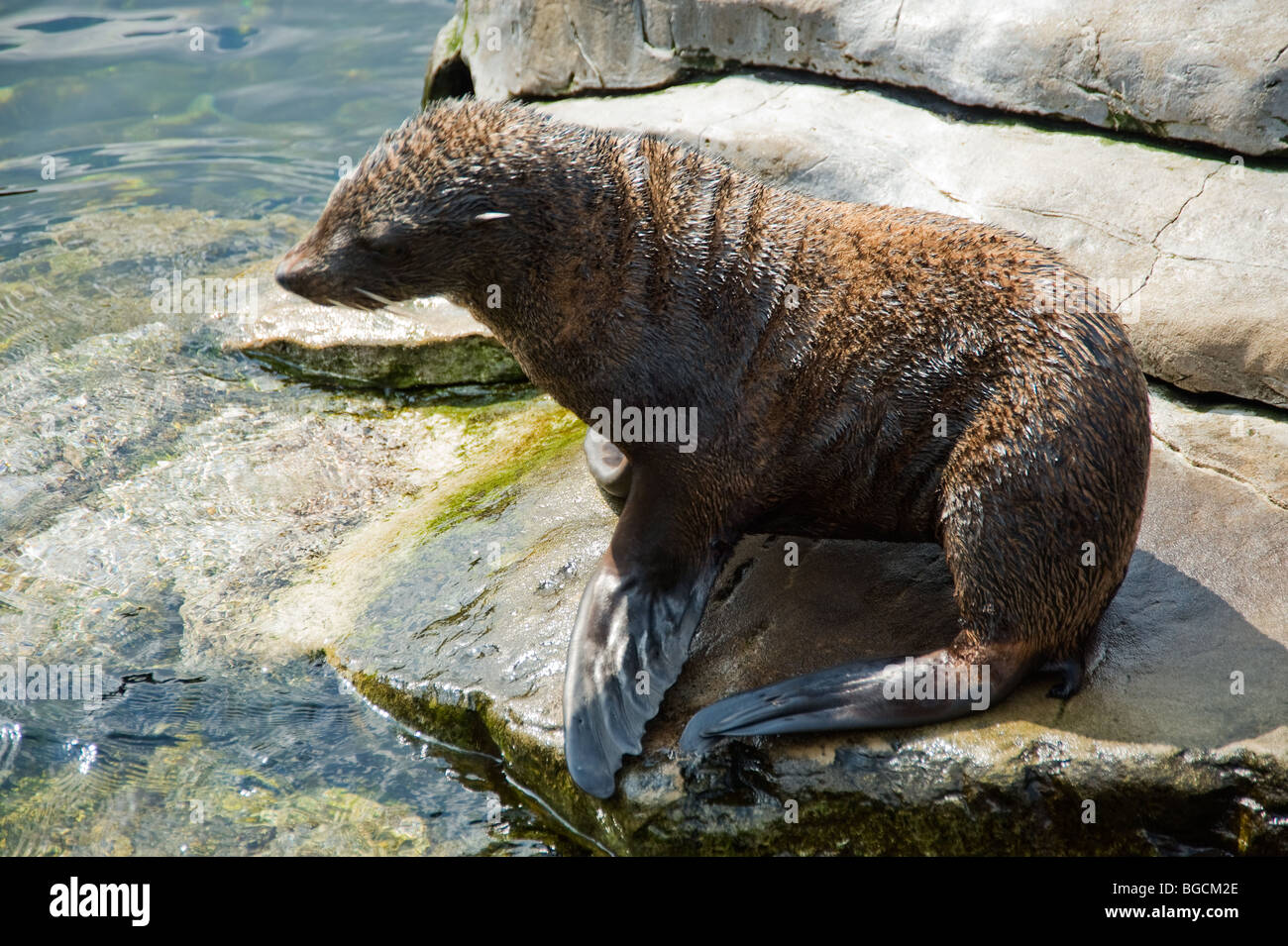South American fur seal: Scientific name: Arctocephalus Australis

Image details
Contributor:
Élan Images / Alamy Stock PhotoImage ID:
BGCM2EFile size:
49.9 MB (2.6 MB Compressed download)Releases:
Model - no | Property - noDo I need a release?Dimensions:
5120 x 3407 px | 43.3 x 28.8 cm | 17.1 x 11.4 inches | 300dpiDate taken:
12 April 2009More information:
South American fur seal Scientific name: Arctocephalus australis Country: Peru, Chile, Argentina, Brazil, Uruguay, United Kingdom (Falklands). Continent: South America Diet: Fish - piscivore, crustaceans - crustacivore, squid. In captivity they have whole fish, usually mackerel, with special "fish-eater" tablets containing supplementary vitamins and minerals which are necessary when using frozen fish. Food & feeding: Carnivore Habitats: Coast, Ocean Conservation status: Lack of information Relatives: Walrus, Leopard seal, Bearded seal Description: The fur seals belong to the same family as sea lions (Otariidae, meaning eared seals). They are more agile on land than the 'earless' seals as they can move their hind limbs forward underneath their body which is raised as they move. Using their front and hind flippers alternately, they can move almost at a gallop on land. In the water the front flippers are used in a rowing movement but the rear flippers are not used at all. The fur seals also have a different type of coat from that of the sea lion, having considerably more secondary hairs, forming a dense undercoat which effectively insulates the body. Other seals have a thick layer of blubber to keep them warm, rather than a layer of "fur". Bulls grow to an average length of 6 ft. (1.9 m) and a weight of 348 lb (158 kg), cows being considerably smaller at 4.5 ft (1.4 m) and a weight of only 110 lb (50 kg). Lifestyle: In the breeding season, this species prefers rocky coasts, where adults haul out onto the rocks. They are particularly numerous on the coast of Uruguay and numbers are stabilising or increasing in other areas since hunting has been controlled. When not at their breeding colonies, these superbly adapted marine mammals spend their time hundreds of miles from land chasing shoals of fish and small shrimps called krill. They can sometimes be seen in the open ocean breaking the water surface to breathe. Their natural enemies in the open ocean are sharks